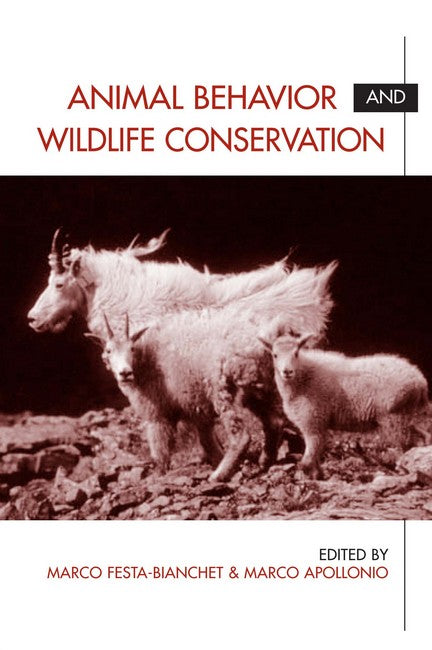PART I. Why Animal Behavior Is Important for Conservation
Chapter 1. General Introduction
Chapter 2. Adaptive Behavior and Population Viability
PART II. Resource-Use Strategies in Space and Time
Chapter 3. Dispersal and Conservation: A Behavioral Perspective on Metapopulation Persistence
Chapter 4. Migration and Conservation: The Case of Sea Turtles
Chapter 5. Bridging the Gap: Linking Individual Bird Movement and Territory Establishment Rules with Their Patterns of Distribution in Fragmented Forests
Chapter 6. Knowledge of Reproductive Behavior Contributes to Conservation Programs
Chapter 7. Foraging Behavior, Habitat Suitability, and Translocation Success, with Special Reference to Large Mammalian Herbivores
PART III. Wildlife Management
Chapter 8. Variation in Life History Traits and Realistic Population Models for Wildlife Management: The Case of Ungulates
Chapter 9. Through the Eyes of Prey: How the Extinction and Conservation of North America's Large Carnivores Alter Prey Systems and Biodiversity
Chapter 10. Behavioral Aspects of Conservation and Management of European Mammals
Chapter 11. Implications of Sexually Selected Infanticide for the Hunting of Large Carnivores
Chapter 12. Exploitative Wildlife Management as a Selective Pressure for the Life-History Evolution of Large Mammals
PART IV. Genetic Diversity and Individual Differences
Chapter 13. Social Groups, Genetic Structure, and Conservation
Chapter 14. Pathogen-Driven Sexual Selection for ""Good Genes"" versus Genetic Variability in Small Populations
Chapter 15. Measuring Individual Quality in Conservation and Behavior
Chapter 16. Individual Quality, Environment, and Conservation
PART V. Conclusion
Chapter 17. Where Do We Go from Here?
Literature Cited
List of Contributors
Index

